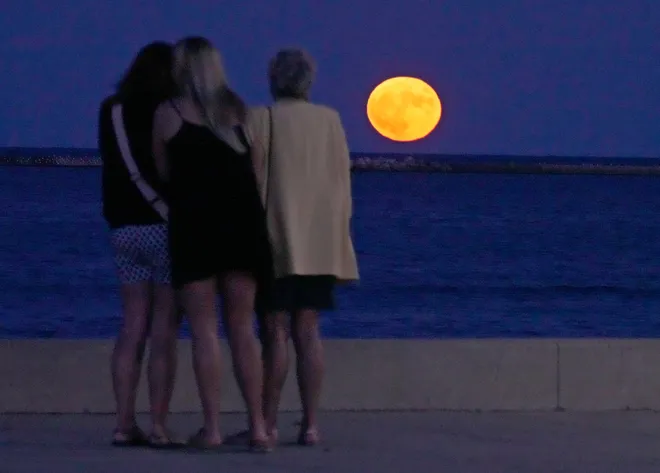July 2024 full moon rises this weekend. But why is it called a 'buck moon'?
July's full moon will appear this weekend (technically early Sunday morning), giving skywatchers their best chance at seeing a full moon in warm weather.
That's because the latter half of July is typically the hottest time of the year in the U.S. In fact, most locations in the Lower 48 see their hottest day of the year between July 15-31, according to the National Oceanic and Atmospheric Administration.
According to the Old Farmer's Almanac, this month's full moon is known as the buck moon.
Because it occurs in the middle of the weekend, it will appear plenty full Saturday and Sunday night.
When is the buck moon?
The buck moon will be at its fullest at 6:17 a.m. EDT on Sunday July 21, according to LiveScience. It will be below the horizon at that time.

Why is it called the buck moon?
July’s full moon is called the buck moon because this is when deer antlers are in full growth after shedding during the spring. "Bucks shed and regrow their antlers each year, producing a larger and more impressive set as the years go by," the Old Farmer's Almanac said.
The moon's monthly nicknames come from a number of places, including Native American, Colonial American and European sources.
For millennia, people across the world, including Native Americans in the eastern and central USA, named the months after nature’s cues.
These names are easy to remember because people assigned them based on what was then happening in the natural world.
It's also known as the thunder or hay moon
July's full moon is also called the "thunder" moon because of early summer's frequent thunderstorms, NASA's Gordon Johnston said.
Another name for July's full moon is the "hay" moon (for when farmers race to put hay in their barns around the storms), Earthsky.com reported. According to AccuWeather, other full moon nicknames this month include the berry moon, the halfway summer moon and the salmon moon.

August's full moon will be a sturgeon supermoon
Next month's full moon – known as the sturgeon moon – will be the first of four supermoons this year.
When the moon’s orbit brings it closer to Earth than usual, the cosmic combo is called a supermoon. A supermoon occurs when the moon’s orbit is closest to Earth at the same time the moon is full.
On average, supermoons appear about 7% bigger and about 15% brighter than a typical full moon.
Disclaimer: The copyright of this article belongs to the original author. Reposting this article is solely for the purpose of information dissemination and does not constitute any investment advice. If there is any infringement, please contact us immediately. We will make corrections or deletions as necessary. Thank you.




